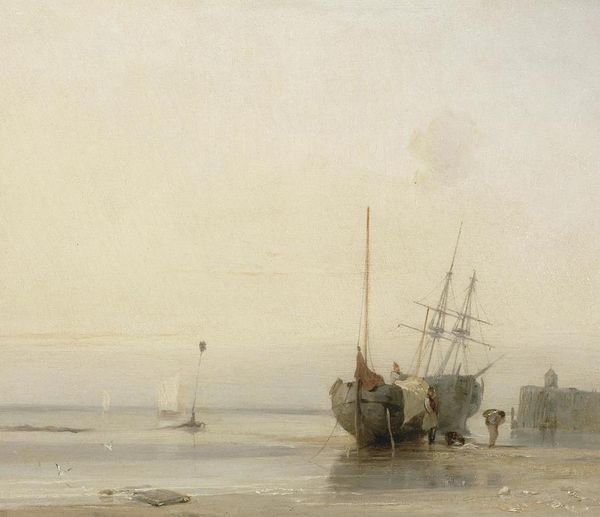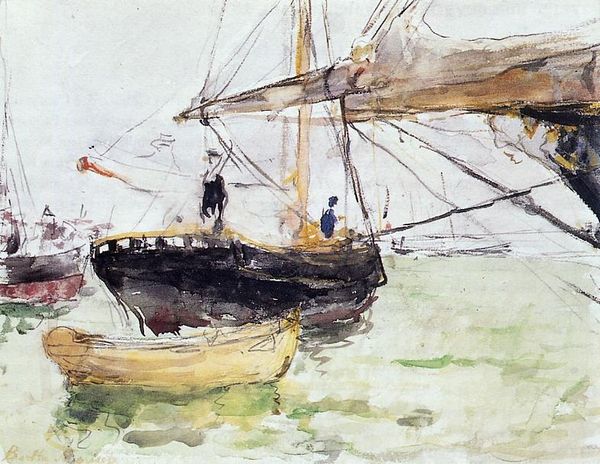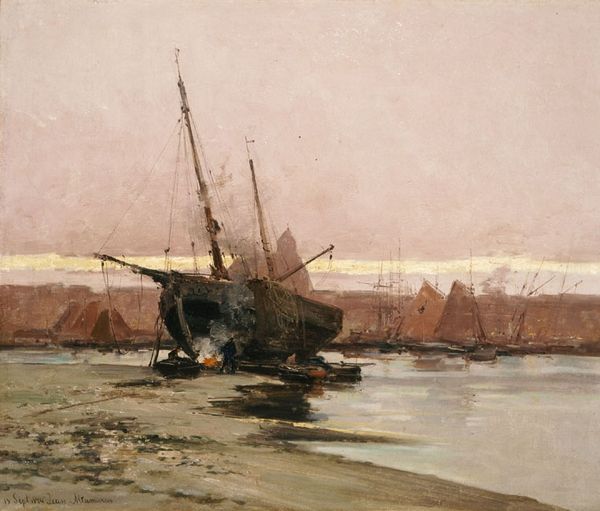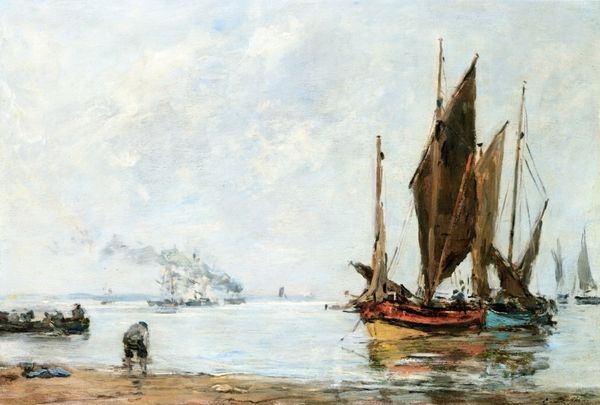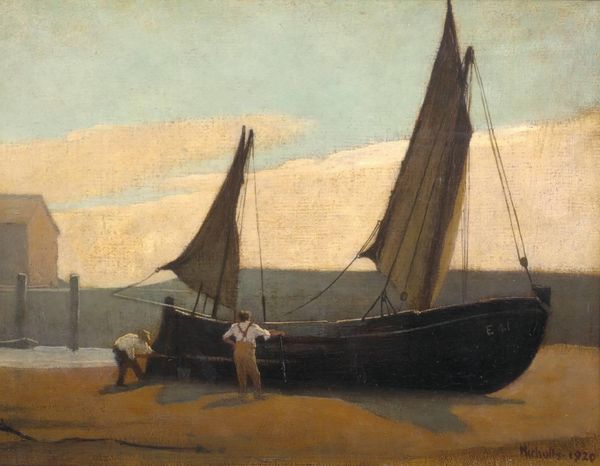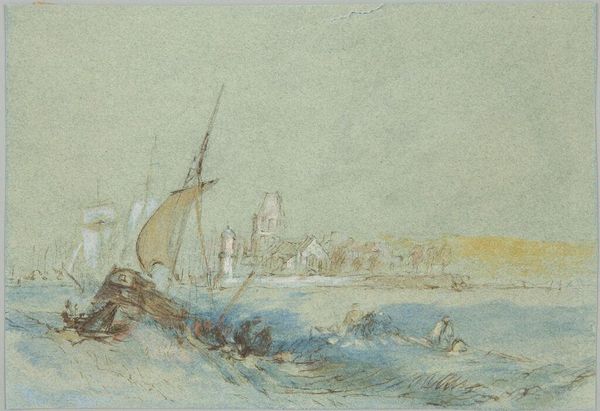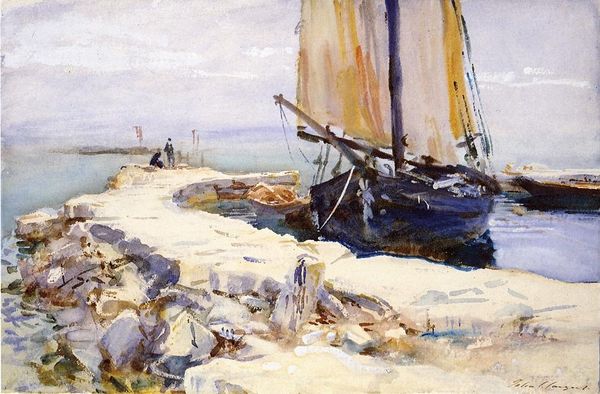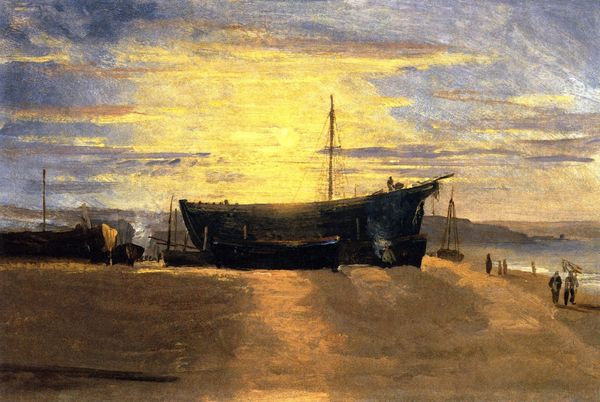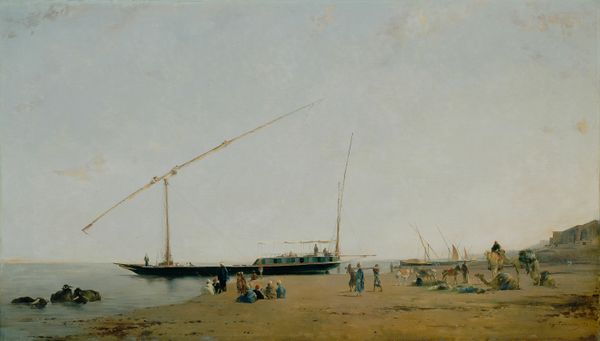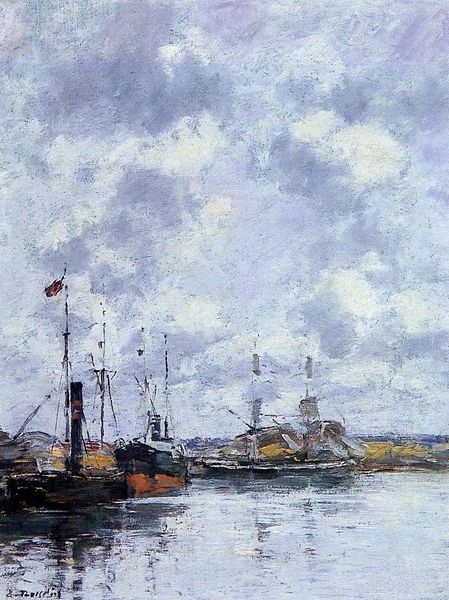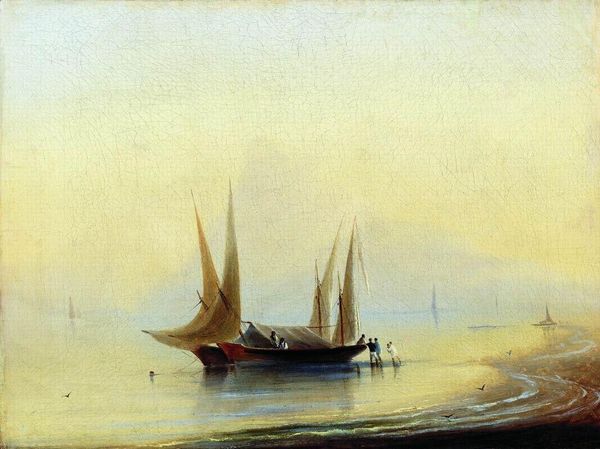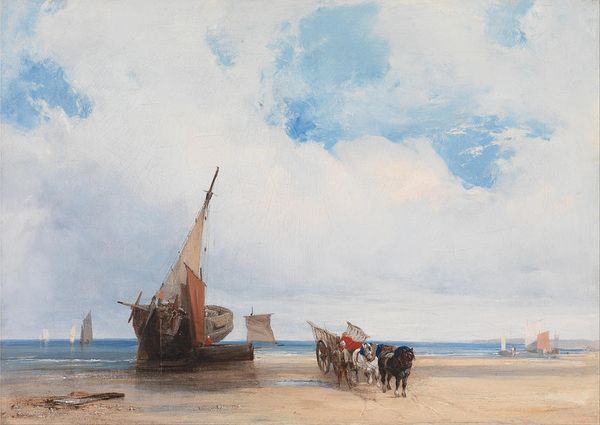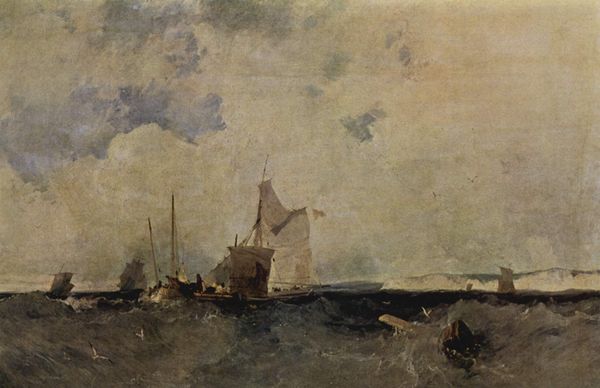
Dimensions: 23.5 x 34.29 cm
Copyright: Public domain
Curator: Right in front of us, we have John Singer Sargent’s watercolor, "Venice, Sailing Boat," created around 1903. Look at that contrast! Editor: Immediately striking! It has such an unfinished, fleeting quality. All soft edges and light playing off dark, silhouetted forms. The color palette leans into neutrals and blues, setting a somewhat melancholic tone. Curator: Sargent's Venetian paintings are fascinating in their exploration of place and identity. Venice, by the turn of the century, was a symbolic site weighed down by its own romantic history. We can see a growing divide between this romanticized past and the gritty reality of a working port city. Sargent's work straddles that divide, doesn’t it? Editor: It certainly seems he's avoiding the traditional postcard views. Instead, he zooms in on these working boats, these everyday scenes, perhaps to find an alternate meaning embedded in labor and transit, though admittedly, heavily framed by a touristic gaze. He often captures moments devoid of the usual festive energy; almost ghostly, if you will. The gondolas are so obscured you can barely see the figures. Curator: Absolutely. It's this interplay between representation and lived reality that resonates strongly. What stories does the art convey about Venetian social history, of working-class Venetian life in relation to global power? The loose, flowing quality is rooted in plein-air painting. Do you think this reflects the spirit of its era? Editor: The haziness almost reflects how history can become obscure, filtered through different lenses. The water seems to diffuse reality into mere reflections, revealing only fragments. Even the brushstrokes become like a blur of impressions and perceptions rather than defined fact. It’s fascinating how technique supports his expression of historical context, I suppose. Curator: Precisely! He captured Venice's transition through shifting modes of production, commerce, and representation. And its lasting relevance lies in his challenging of perceptions of the city's grand narratives. Editor: And how relevant it remains to us today, these issues about place, tourism, and identity; his Venice makes one ponder the ever-present negotiation between authenticity and perception, still an intrinsic aspect of the human condition.
Comments
No comments
Be the first to comment and join the conversation on the ultimate creative platform.
